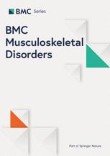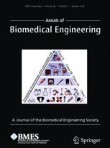Abstract
Although treatment with biologic disease-modifying antirheumatic drugs (bDMARDs) has significantly improved clinical outcomes in patients with rheumatoid arthritis (RA), many patients do not have access to these treatments. As cost-effective alternatives to their reference products (RPs), biosimilars provide an opportunity to increase access to bDMARDs. The European Medicines Agency and the US Food and Drug Administration have detailed pathways for the approval of biosimilars based on establishing the similarity of the biosimilar to the RP in terms of structure and function, pharmacokinetics (PK), efficacy, safety, and immunogenicity. A number of biosimilars of adalimumab, infliximab, etanercept, and rituximab RPs have been approved in the United States and/or European Union. This article is focused on the seven adalimumab biosimilars. A review of the data for the biosimilars FKB327, ABP 501, BI 695501, GP2017, MSB11022, PF-06410293, and SB5 confirm that these pr oducts are highly similar to the adalimumab RP with regard to structure, physicochemical and biological properties, PK, safety, immunogenicity, and efficacy in the treatment of RA and other chronic immune-mediated, inflammatory conditions. Data from several switching studies showed no changes in efficacy, safety, trough serum drug concentration, or immunogenicity between the biosimilars and their RP.
Trial registration: ClinicalTrials.gov identifiers: NCT02260791, NCT02405780, NCT01970475, NCT02137226, NCT02045979, NCT02744755, NCT02144714, NCT02167139, NCT03014947, NCT02114931, NCT02640612, NCT02640612, NCT02167139, NCT03052322, NCT02480153. EudraCT numbers: 2012-005140-23, 2012-000785-37, 2013-003722-84, 2015-000579-28, 2014-002879-29, 2014-000662-21, 2013-004654-13, 2015-002634-41, 2014-005229-11, 2016-002852-26, 2014-000352-29




